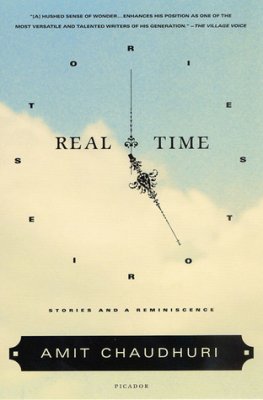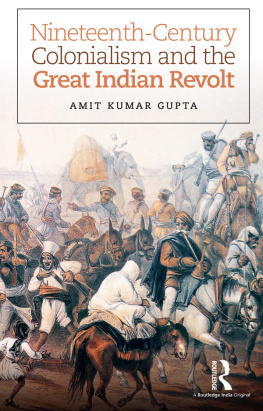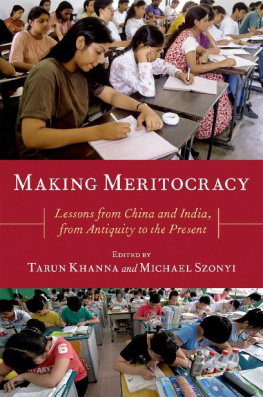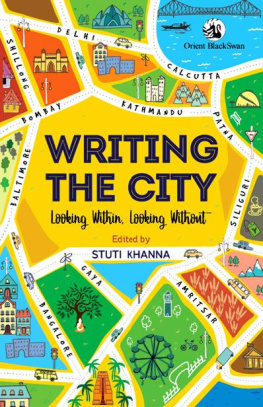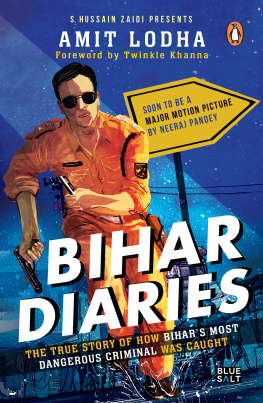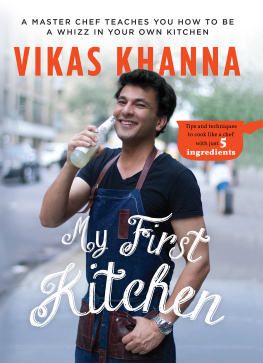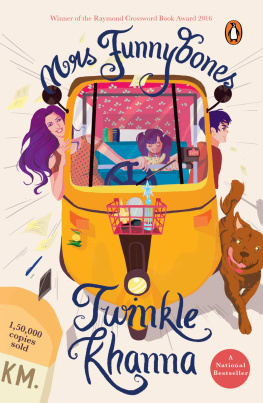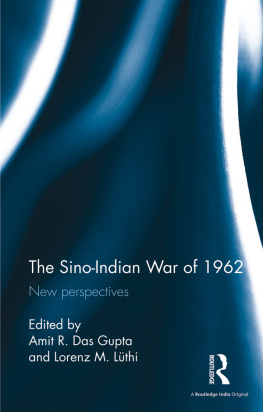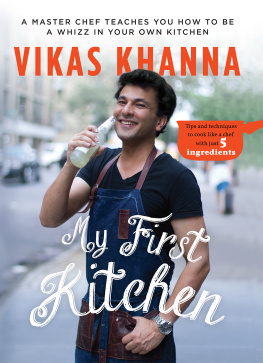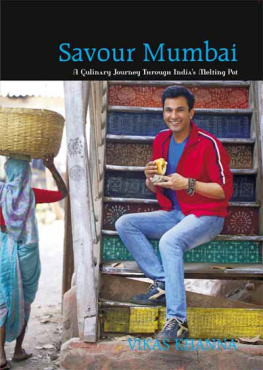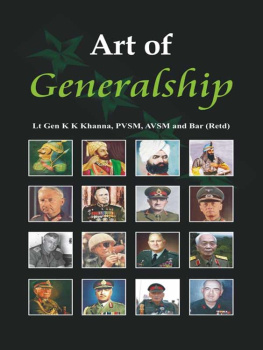Amit Khanna - Words, Sounds, Images. A History of Media and Entertainment in India
Here you can read online Amit Khanna - Words, Sounds, Images. A History of Media and Entertainment in India full text of the book (entire story) in english for free. Download pdf and epub, get meaning, cover and reviews about this ebook. year: 2019, publisher: HarperCollins India, genre: Politics. Description of the work, (preface) as well as reviews are available. Best literature library LitArk.com created for fans of good reading and offers a wide selection of genres:
Romance novel
Science fiction
Adventure
Detective
Science
History
Home and family
Prose
Art
Politics
Computer
Non-fiction
Religion
Business
Children
Humor
Choose a favorite category and find really read worthwhile books. Enjoy immersion in the world of imagination, feel the emotions of the characters or learn something new for yourself, make an fascinating discovery.

- Book:Words, Sounds, Images. A History of Media and Entertainment in India
- Author:
- Publisher:HarperCollins India
- Genre:
- Year:2019
- Rating:3 / 5
- Favourites:Add to favourites
- Your mark:
- 60
- 1
- 2
- 3
- 4
- 5
Words, Sounds, Images. A History of Media and Entertainment in India: summary, description and annotation
We offer to read an annotation, description, summary or preface (depends on what the author of the book "Words, Sounds, Images. A History of Media and Entertainment in India" wrote himself). If you haven't found the necessary information about the book — write in the comments, we will try to find it.
Amit Khanna: author's other books
Who wrote Words, Sounds, Images. A History of Media and Entertainment in India? Find out the surname, the name of the author of the book and a list of all author's works by series.
Words, Sounds, Images. A History of Media and Entertainment in India — read online for free the complete book (whole text) full work
Below is the text of the book, divided by pages. System saving the place of the last page read, allows you to conveniently read the book "Words, Sounds, Images. A History of Media and Entertainment in India" online for free, without having to search again every time where you left off. Put a bookmark, and you can go to the page where you finished reading at any time.
Font size:
Interval:
Bookmark:
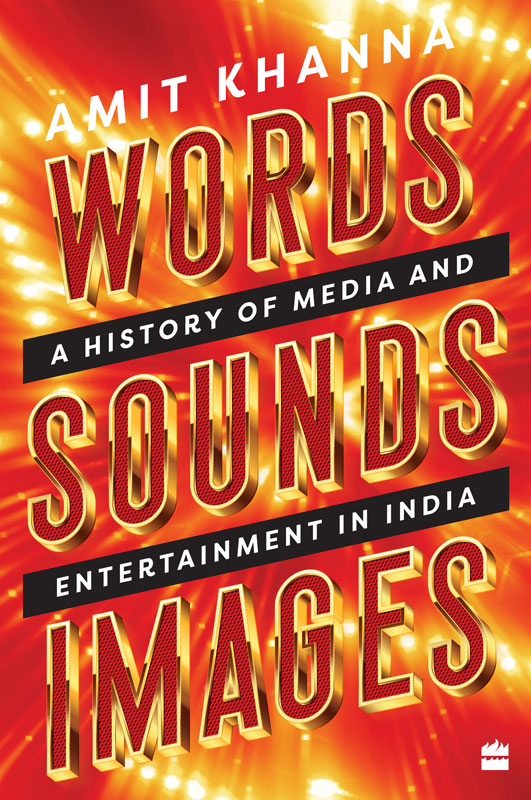
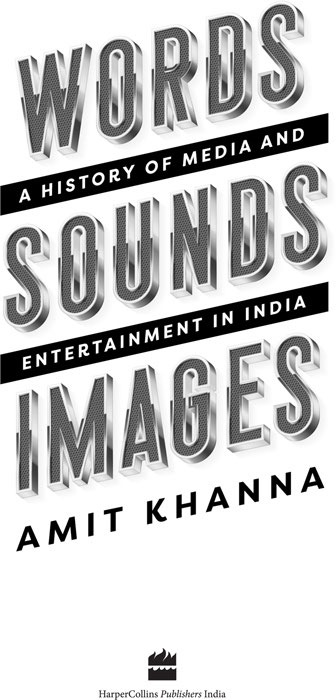
For
My sister
Namita

AFTER SPENDING OVER FORTY-FIVE years in media and entertainment, actively working in all sectors at the top, I decided it was time to quit working for profit. However, having spent a lifetime pursuing not only a passion but being involved with various arts and crafts of different media, I wanted to do some academic work on the subject I knew well. One of the first thoughts which came to my mind was to write a book. After bouncing various ideas and discussing them with some friends, whose opinion I value, I zeroed in on doing this volume.
I had two choices. Either I could do a comprehensive book on Indian cinema, a field where I have spent maximum time, or do an overview of the evolution of different segments of creative and performing arts. I chose the latter. Again, the choice was between writing longish essays on different media or taking a much broader perspective. Finally, the book is a bit like an encyclopaedia, where some portions are described in detail. Its a big fat book, but I have written it in a manner that you can read the whole book or just read about media and art forms which interest you, or about specific periods in history.
When one writes about so many different yet allied subjects which involve hundreds of much-loved and admired people, one is bound to miss out many truly talented achievers. For such omissions, some deliberate, but more on account of space constraints, I can only apologize. I have tried to be objective and give the reader a kind of a birds-eye view with an occasional deep dive. Sometimes if it reads like a book of lists, I crave your indulgence. A research team helped me for three years to gather material from various sources, which I then distilled and interpreted. Most of the facts are culled out from different sources, not any one source, hence not attributed. Besides, a large part is based on personal knowledge of people and events since the 1960s.
I am fortunate to have had the opportunity to work in every media form and discipline in the past five decades. My first poem was published when I was fourteen. I wrote my first play a year later, I got involved with stage, radio and journalism by my sixteenth birthday. I was editing a magazine when I turned eighteen. Soon I did my first TV programme, wrote advertising copy, film reviews and more. I was an active member of Delhis cultural scene. All this gave me a chance to observe and acquaint myself with leading artistes, musicians, painters, dancers, journalists and many other creative professionals. Some of those relationships have endured for five decades.
A serendipitous meeting with a matinee idol opened the doors of cinema for me. While still in college, I was working with the stars production company Navketan. And on completing college, I went off to Bombay and again was lucky that in a couple of years I was heading the company. Meanwhile, I pursued my writing both on cinema and in cinema. Soon I turned a lyricist and script writer, even as I learnt the ropes of film making. Those were heady times as I came in contact with the giants of showbiz and creative fraternity. I worked with several top film-makers, artistes and technicians. I turned a producer in 1975 and was soon an active member and office bearer of the Producers Guild and other industry bodies.
By the time, I was an established lyricist, writer, film-maker, industry leader and nominated on various government committees and institutions. I was an important interlocutor between governments, media, industry and a regular speaker at conferences in India and abroad and wrote extensively for various publications. I was one of the first to enter TV production. I was one of the most well-networked individuals in media and entertainment in India and developed long-lasting friendships with many from various fields. I kept engaging with eminent persons from different fields, learning and absorbing as much as I could. Interestingly, while I was involved in the hurly-burly of mainstream popular cinema I kept engaging with my colleagues and peers from the new wave, academicians, advertising fraternity, writers, media and corporate leaders. I was always willing to try my had at something newfrom music video to commercials, documentaries to feature-journalism to academicsso that I was constantly learning and acquiring new skills.
In 1989, I set up Plus Channel, the first integrated media and entertainment company, and in 2000 set up Reliance Entertainment with the leading business familythe Ambanis. I spearheaded the move towards corporatization of this industry and have headed media and entertainment committees of both FICCI and CII. All this gave me deep insights into various segments and disciplines. Since I lived alone and worked long hours, seven days a week, I was able to squeeze time for all my interests and work. There are dozens of masters whom I either worked with or observed from close quarters for years, which taught me most of what I know. This book is a tribute to these pioneers and achievers.

Imagine the earliest times when homo sapiens evolved on Earth about three hundred thousand years ago. They were roving hunters and gatherers living in unfriendly habitats and fighting for survival with other species. It is assumed that they had at least primitive verbal skills and thinking ability, which allowed them to use fire and fashion basic tools. Somewhere, a few thousand years ago, humans dispersed to different parts of the world in search of food and shelter or just to escape the wrath of nature. Typically, our ancestors would have lived in caves, or other sheltered spaces and in groups. Communication between individuals and groups gave rise to language and semiotics. Conversation, stories and songs ensued.
Besides traversing for food and escaping from predators and, of course, sleeping, a lot of time would have been spent in leisure. Fear and boredom, as Arthur Koestler has once written, are two primordial emotions. Both these require not only conversational skills but also some pastime. My hypothesis is that the early humans thus became the first storytellers. Around a campfire or in long periods of resting or on the move, knowledge gained through experience was shared between community members. Over time, learning from nature, they acquired elementary musical and dancing skills and this became the first form of entertainment. Every small or big event like birth or death or a good day at the forest would call for a celebration. Ritualization of these acts followed, though organized religion was still some centuries away. The first tribes were born around this time, as were tribal cultures. In fact, even today some tribes in remote areas of India have been observed to follow a similar life pattern, thousands of years later.
A few thousand years ago, these nomadic humans settled down in larger colonies which then gave rise to the first civilizations. There is enough empirical evidence now that at least four or five ancient civilizations took root about six thousand years ago. The Indus Valley, Gobekli Tepe, Sumerian, Chinese, Egyptian, Mayan and Persian are among the earliest ones, though some recent finds indicate signs of settlers in Africa and northern Europe as well. These civilizations are the cradles where human thought and creativity was born.
Next pageFont size:
Interval:
Bookmark:
Similar books «Words, Sounds, Images. A History of Media and Entertainment in India»
Look at similar books to Words, Sounds, Images. A History of Media and Entertainment in India. We have selected literature similar in name and meaning in the hope of providing readers with more options to find new, interesting, not yet read works.
Discussion, reviews of the book Words, Sounds, Images. A History of Media and Entertainment in India and just readers' own opinions. Leave your comments, write what you think about the work, its meaning or the main characters. Specify what exactly you liked and what you didn't like, and why you think so.

